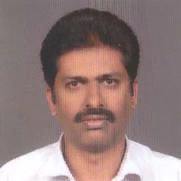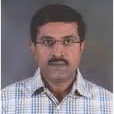International Journal of Image, Graphics and Signal Processing (IJIGSP)
IJIGSP Vol. 9, No. 8, 8 Aug. 2017
Cover page and Table of Contents: PDF (size: 1033KB)
Estimation of Noise in Nonstationary Signals Using Derivative of NLMS Algorithm
Full Text (PDF, 1033KB), PP.9-16
Views: 0 Downloads: 0
Author(s)
Index Terms
Speech enhancement, EEG, noise estimation, NLMS, EDNSS, EMSE
Abstract
In this paper a new Normalized Least mean square (NLMS) algorithm is proposed by modifying Error-data normalized step-size algorithm (EDNSS). The performance of proposed algorithm is tested for nonstationary signals like speech and Electroencephalogram (EEG). The simulations of above is carried by adding stationary and nonstationary Gaussian noise , with original speech taken from standard IEEE sentence (SP23) of NOIZEUS data base and EEG taken from EEG database (sccn.ucsd.edu). The output of proposed and EDNSS algorithm are measured with excess mean square error (EMSE) in both stationary and non stationary environment. The results can be appreciated that the proposed algorithm gives improved result over EDNSS algorithm and also the speed of convergence is maintained same as other NLMS algorithms.
Cite This Paper
Rathnakara.S, V.Udayashankara,"Estimation of Noise in Nonstationary Signals Using Derivative of NLMS Algorithm", International Journal of Image, Graphics and Signal Processing(IJIGSP), Vol.9, No.8, pp.9-16, 2017. DOI: 10.5815/ijigsp.2017.08.02
Reference
[1]Simon Haykin “ Adaptive Filter Theory” Fourth edition pearson education
[2]V.Udayashankara “ Modern digital signal processing” second edition PHI
[3]Alexander D.Poularikas, Zayed M.Ramadan “Adaptive filtering primer with MATLAB CRC press
[4]Zayed Ramadan, &Alexander Poularikas ,Performance Analysis of a New Variable Step-Size LMS Algorithm with Error Nonlinearities IEEE 2004 pp384-388
[5]Zayed Ramadan and Alexander Poularikas A Robust Variable Step-Size LMS Algorithm Using Error-Data Normalization IEEE 2005 PP219-224
[6]Zayed Ramadan and Alexander Poularikas A Variable Step-Size Adaptive Noise Canceller Using Signal to Noise Ratio as the Controlling Factor IEEE2004 PP 456-461
[7]Zayed Ramadan and Alexander Poularikas An Adaptive Noise Canceller Using Error Nonlinearities in the LMS Adaptation IEEE 2004 pp3-8
[8]Joonwan Kim &Alexander D. Poularikas “Performance analysis of the Adjusted step size NLMS algorithm IEEE 2004 pp 467-571
[9]Ma Shengqian, Xu Guowei, Ma Zhifeng, Wei Shuping, Fan Manhong “Research on adaptive noise canceller of an improvement LMS algoritnm 2011 IEEE pp1611-1614
[10]K.Sembulingam & Prema Sembulingam “ Essentials of Medical Physiology” 6th Edition Jaypee 2012
[11]P. C. Loizou, “Speech enhancement based on perceptually motivated Bayesian estimators of the magnitude spectrum,” IEEE Trans. Speech Audio Process., vol. 13, no. 5, pp. 857–869, Sep. 2005
[12]Boll,S “ Suppression of acoustic noise in speech spectral subtraction” IEEE transactions on acoustics, speech and signal processing. Vol22, Issue2 pages 113-120, 1979,
[13]Ephraim Y, Malah D. “Speech Enhancement using a Widrow, Mccool J.M; Laimore,M; Johnsor C.R. “Stationary and nonnstationary learning charactristis of the LMS adaptive filter. IEEE proceedings vol64, Issue 8.
[14]Rathnakara.S and Dr.V.Udayashankara “System Identification in Speech Signal Using Modified Kalman Based Normalized Least Mean Square (NLMS) Algorithm”-IJARCSSE Volume 7, Issue 3, March 2017, PP180-184
[15]Rathnakara.S and Dr.V.Udayashankara “Real Time System Identification for Speech Signal Implemented on TMS320C6713” IOSR Journal of VLSI and Signal Processing (IOSR-JVSP) Volume 7, Issue 2, Ver. I (Mar. - Apr. 2017), PP 20-25
[16]Rathnakara.S and V Udayashankara. Enhancement of Speech Signal using Improved NLMS Algorithm. Communications on Applied Electronics 6(9):34-37, April 2017
[17]Ma Shengqian, XuGuowei, Ma Zhifeng, Wei Shuping, Fan Manhong “Research on adaptive noise canceller of an improvement LMS algorithm 2011 IEEE pp1611-1614
[18]Siqi Li,m shouhao wu, yongjie wang, wenxiu guo and youling zhou “An improved NLMS algorithm based on speech enhancement” IEEE 2015 PP 896-899
[19]Grega Repovš, Oddelek za psihologijo” Dealing with Noise in EEG recording and Data Analysis Informatica Medica Slovenica 2010 pp 18-25
[20]Ashraf Adamu Ahmad, Aminu Inuwa Kuta, Abdulmumini Zubairu Loko,"Analysis of Abdominal ECG Signal for Fetal Heart Rate Estimation Using Adaptive Filtering Technique", International Journal of Image, Graphics and Signal Processing(IJIGSP), Vol.9, No.2, pp.19-26, 2017.DOI: 10.5815/ijigsp.2017.02.03
[21]Sunnydayal. V, N. Sivaprasad, T. Kishore Kumar,"A Survey on Statistical Based Single Channel Speech Enhancement Techniques", International Journal of Intelligent Systems and Applications (IJISA), vol.6, no.12, pp.69-85, 2014. DOI: 10.5815/ijisa.2014.12.10
[22]C. H. You, S. N. Koh, S. Rahardja, “Beta-order MMSE spectral amplitude estimation for speech enhancement,” IEEE Trans. Speech Audio Process., vol. 13, no. 4, pp. 475–486, Jul. 2005.
[23]Varin Ephiraim and David malah “Speech enhancement using minimum-mean square error short-time spectral amplitude esimmator” IEEE transactions on acoustics, speech and signal processing. Vol22, Issue2 pages 1109-1121, 1984,
[24]Chung-Chien Hsu, Tse-En Lin, Jian-Hueng Chen and TaiShih Chi, “Spectro-temporal subband wiener Filter for speech enhancement,” in Proc. IEEE Int. conf. Acoustics, Speech and Signal Process. (ICASSP), 2012, pp. 4001- 4004
[25]Mohamed Djendi, Raheema Henni and Akila Sayoud ”A New Dual Forward BSS Based RLS (DFRLS) algorithm for Speech Enhancement” 978-1-5090-5579-1/16/$31.00©2016 IEEE

